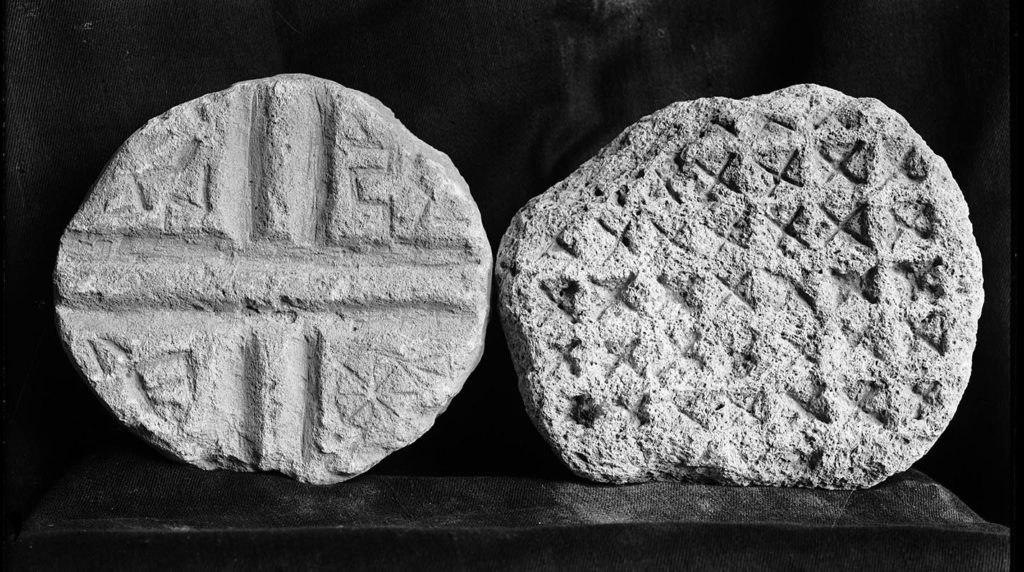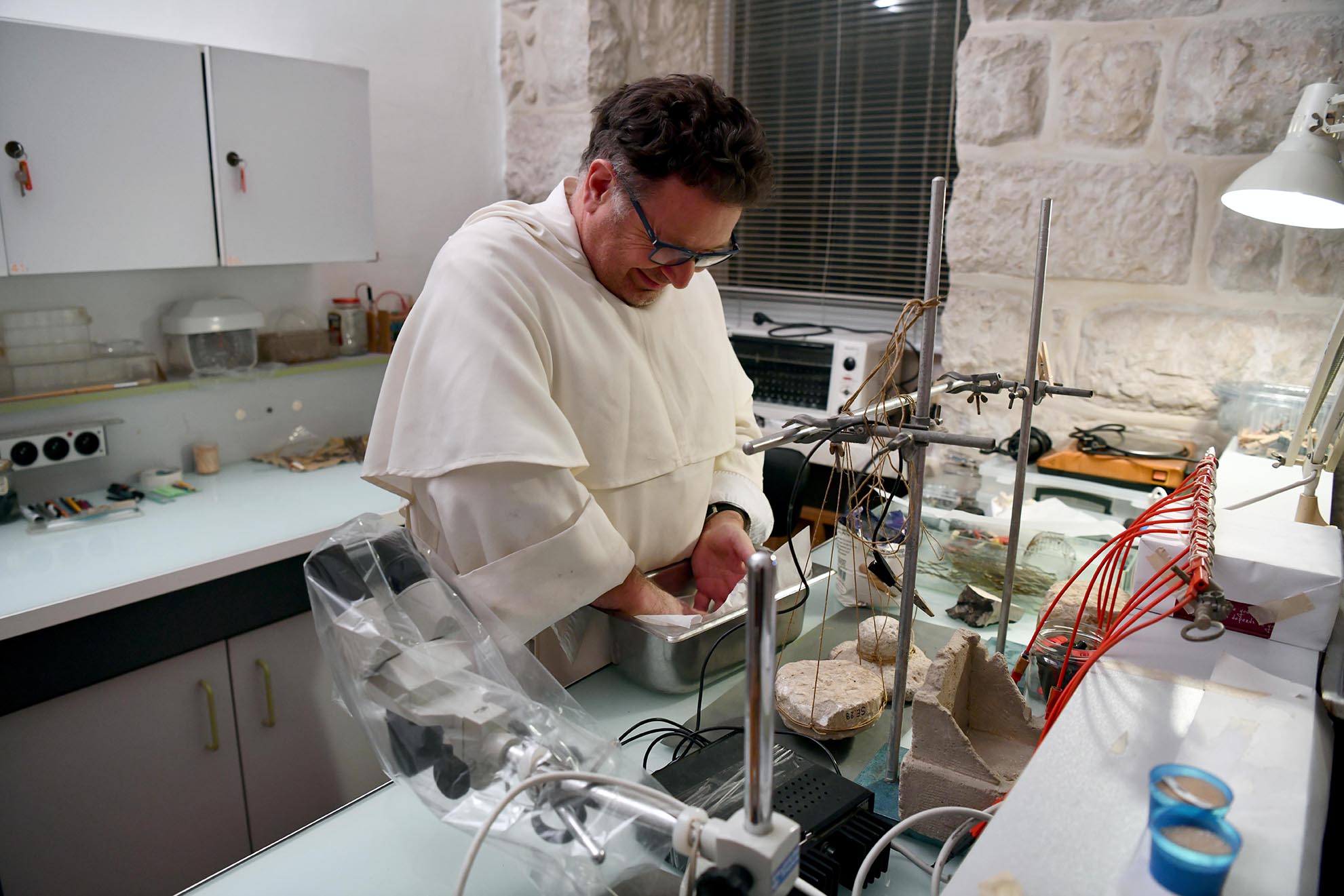In its archaeological collections, the convent preserves two precious Eucharistic moulds, authentically found in the ruins of our Byzantine basilica at the time of the first excavations, before the arrival of Father Lagrange. It was around 1886-1887, at the time of Father Lecomte, founder of the convent. These limestone objects were used to print an image of the cross and Greek letters on the wafers that served as Eucharistic bread in the old Byzantine rite.
Fr. Dominique-Marie Cabaret, assisted by Fr. Jean-Baptiste Humbert, had a great time reusing the two liturgical objects. Fr. Cabaret kneaded a large ball of leavened dough (the Byzantines did not use unleavened bread) and baked it in the convent kitchen after having delicately printed the image of the two molds, turned upside down on the still fresh dough.
The photo library has an old black & white photo, on glass plate, of the moulds at the time of the discovery.

Black & white photo of Byzantine Eucharistic moulds.

The Byzantine moulds are hung on the gallows of the laboratory to avoid crushing the paste, which was kneaded by the Fr. Dominique-Marie Cabaret.

The Byzantine molds are turned upside down on the dough.

The result: two Byzantine “wafers”.
